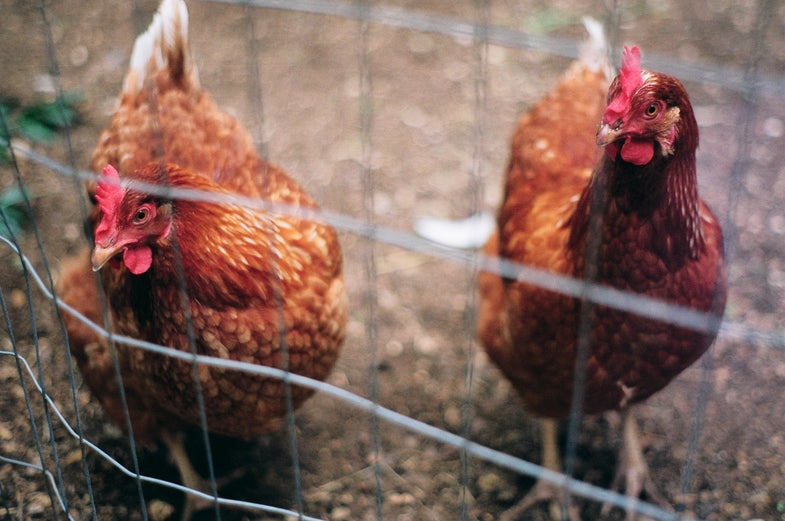Love eating chicken? Thank hungry Medieval Catholics.
Two legs good, four legs bad

Before they gave us nuggets, fillets, and scrambled eggs, chickens started out as wild birds in the jungles of Southeast Asia. Humans started breeding and raising chickens some 6,000 years ago, and since then, Gallus gallus domesticus has undergone some pretty significant genetic changes from its predecessor.
By analyzing DNA from the bones of ancient chickens, a new study has found that some of the gene changes that make modern chicken farming possible came out of Medieval Europe—and that religious rituals may be to thank (or blame).
Chickens started becoming common in Europe around 800 A.D., during the Middle Ages. Around this time, Catholicism was also spreading, so people have speculated that Christianity’s ban on eating four-legged animals during fasting periods may have lead to the chicken’s rising prominence—and the authors found that a few genetic changes may have helped along the way.
Starting around 800 A.D., a new variant of the gene TSHR showed up in European chickens and spread quickly. This variant allows the birds to lay eggs all year round, instead of just during a specific mating season like their wild relatives. It also makes them start laying eggs at a younger age, and seems to reduce a chicken’s fear of humans and aggression toward other chickens—all traits that would have been favorable to chicken farmers.
As farmers continued choosing the nicest and most productive chickens to breed the next generation, this version of TSHR spread over time. It’s now nearly ubiquitous in today’s commercial breeds, says study author Liisa Loog. “Ninety-nine percent of the chickens have it.” So if you’ve recently bought chicken at the supermarket or in a fast food restaurant, you can thank the Middle Ages—because the factory farm it likely came from might not be possible without the reduced aggression that comes with this gene variant.
“It certainly raises questions about whether we’d be able to have the big chicken farms we do today,” says Loog.
But did Catholicism really play a role in shaping chicken genetics? As with any study looking back in time, it’s difficult to sort out exactly what happened, and when— after all, correlation doesn’t prove causation. There is another possible explanation: Urbanization was also on the rise at the time, so animals who could live in small spaces without pecking each other to death might have been favored.
“We cannot say which one of these was most important,” said author Anders Eriksson in a press statement, “but most likely a combination of all these factors affected selective pressures on European chickens and consequently their evolution.”